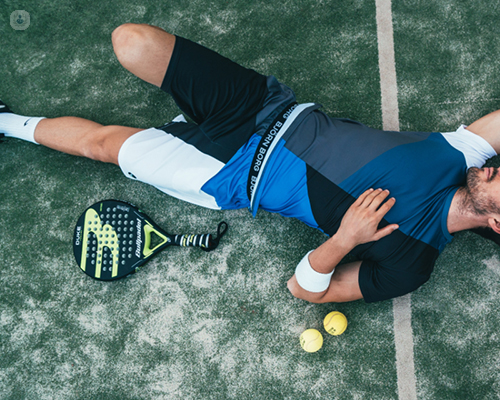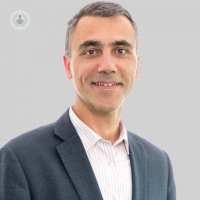Platelet rich plasma for tendon injuries: how it works
Escrito por:A tendon has been injured when it suddenly becomes symptomatic. The patient usually complains of pain, swelling, stiffness in the affected area. It may also cause a weakness of the patient's arm or leg, depending on the location. There might be a crunchy sound associated with the tendon movements.
Platelet rich plasma (PRP) is a therapy that can speed up the healing process. Many famous elite athletes such as tennis star Rafael Nadal use the treatment alongside medication, physical therapy or even surgery to enhance recovery. We’ve asked consultant orthopaedic surgeon Mr Peter Peev to explain the benefits of PRP injections to aid an injured tendon.

What do we mean when we say a tendon has been injured?
The first presentation is usually a sudden onset of any of the above-mentioned symptoms but more often the patient cannot relate to a specific accident or trauma.
Symptoms may also develop gradually to an extent where the function of the limb is severely affected and this would be the reason to seek help from a healthcare professional.
Does an acute injury look different from a chronic injury?
The main function of the tendon is to transmit forces from a muscle to bone and allow movement of a body part to occur. It is developed to sustain a certain amount of tensile forces. This amount is different for smaller and bigger tendons. When the tensile forces exceed the limit amount the tendon may tear.
This may happen in the musculotendinous part of the muscle, which is in the middle of the tendon substance, or at the attachment of the tendon to the bone. Other loading forces like friction and repetitive movements can lead to rather chronic changes in the tendon. It may suffer microtears, persistent inflammation and degeneration.
This chronic changes gradually weaken the tendon structure and it becomes more susceptible to tensile damage.
How well can a tendon heal on its own?
The tendon has a great potential for healing. It is a process very similar to the wound or fracture healing process. It does occur on a cellular and biochemical level.
The healing process normally goes through three phases: inflammation as a result of the acute injury, proliferation of cells to produce the right molecules required for the tendon structure, and remodelling of the immature structure to increase its tensile strength.
The healing potential changes in one’s lifetime and is influenced by maturation and ageing, repetitive stress and overuse, immobilisation, medication and chronic injuries. The healing phases are not as well defined in chronic cases as they are in acute injuries. Once the tendon is healed a proper rehabilitation can lead to full functional recovery.
How does PRP help with the healing process? What role does it play?
Platelet rich plasma is derived from the patient’s own blood. It delivers platelets and growth factors in the affected area, which is essential for the healing process. The natural healing process is enhanced by the body’s own healing factors, delivered at the right place.
Generally, the tendon being a mechanical tissue is poorly vascularized. In addition, forming new scaring tissue at the injured place can further deteriorate the blood supply. Providing the patient’s own blood products in the healing zone stimulates developing of correct collagen type in the tendon.
What difference can PRP make to someone with a tendon injury (e.g. an ankle injury?)
PRP therapy is suitable for both acute and chronic tendon injuries. In acute injuries, it speeds up the recovery from tendon injuries and helps the formation of the proper collagen layers as opposed to disorganised scaring.
It has been long used in elite athletes to help them recover from tendon injuries during or even before the active season. In the case of chronic injuries, it activates the tissue regeneration and leads to long term symptomatic relief.
Is there a limit to how many injections are helpful? How much is needed?
There is no limit to how many injections are needed. The PRP is the patient’s own blood and carries no risks of an allergic reaction, side effects or rejection. For tendon injuries usually, it is used in conjunction with physical therapy and can be repeated when needed. A good rehabilitation program following the injection facilitates a successful outcome.
Do not hesitate to book an appointment with Mr Peev to see if PRP therapy is suitable for your needs.


